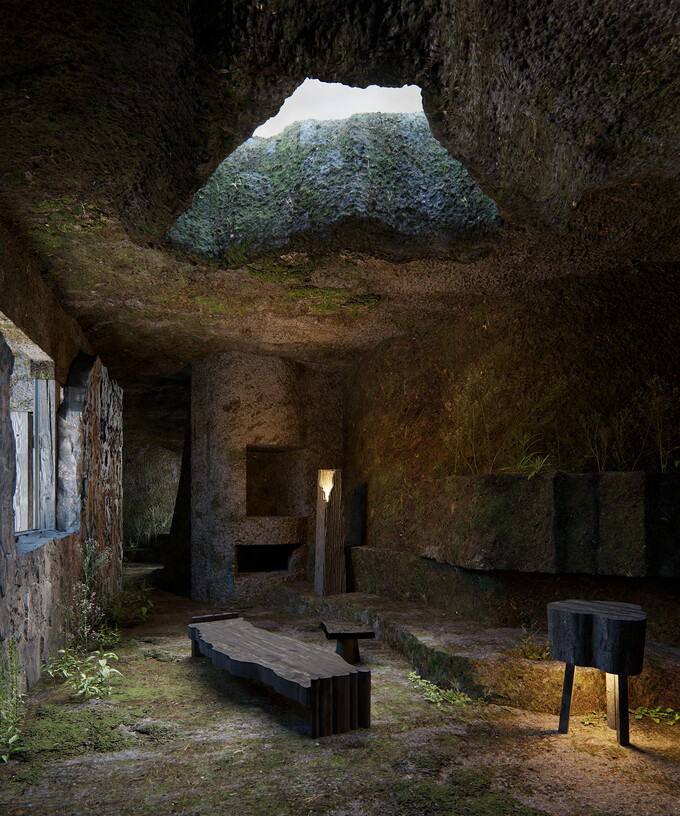Gallery
ARCHITECTURE FOR THE REHABILITATION OF POST-WILDFIRE HABITATS
Spain
Credits
ELENA BELTRÁN VILLAR AND JESÚS MESEGUER CORTÉS
Notes
We learnt to inhabit by sheltering from nature. We never thought about how to inhabit its ashes.
In the heat of the fire, forests burn and ecosystems are lost. Our anthropic action has an entropic effect on the territory. In this context, the development of post-fire strategies has become a pressing issue to guarantee ecological renewal. Therefore, we must understand how to act on the deposit of wounded wild matter.
What happens with burned wood after a wildfire? The most common line of action has been the extraction of this natural stratum to relocate it and commercialise its raw material. However, by removing this layer, the landscape’s structure is modified, as areas are left devoid of biomass and erosion is accentuated, which ultimately prevents regeneration. Accordingly, new strategies are being implemented. By keeping burned wood in the healing ecosystem, we create a biological stratum that enhances natural recovery, providing nutrients and fostering mutualistic interactions between species. By learning from this approach, we could experiment with landscape interventions that participate in its own biological restoration.
Incendio operates in this context. After a wildfire, the project rehabilitates a burned down Masia, a traditional architectural typology in forested areas in Spain. The strategy is to surround its ruins with a cremated-wood stratum to reconstruct two habitats. It mediates between restoring a domestic interior and its surrounding landscape. As a consequence, the new layer becomes an organic deposit where multispecies can grow and therefore contribute to an enhancement of biodiversity.
In the Masia, the interior space is defined as the interstice between the outer wooden stratum and the inner stone wall. As the distance between both limits contracts and expands, a concatenation of subspaces is drawn. The exterior wall widens into different layers, at different heights, to establish a topography that acts as the basis to reappropriate the space. To accommodate life, a series of neoprimitive wood-based objects are placed strategically throughout the intervention. As time goes by, vegetation will start to grow within these furniture pieces and a radical way to inhabit within a forest emerges. A more-than-human architecture grows to enable the recovery of our ecosystems. Perhaps, by understanding the efforts and sacrifices that imply restoring a landscape, we can begin to prevent its destruction.
